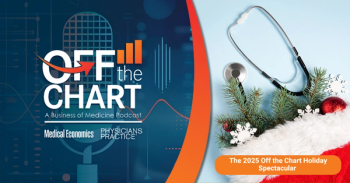
‘Just totally untenable for our practices’ – AAFP president discusses 2025 Medicare physician pay
Doctors once again left behind as Medicare prepares to pay other health care entities more next year.
A proposed cut to doctors in the Medicare Physician Fee Schedule (PFS) is disappointing, but not surprising, said the leader of the American Academy of Family Physicians.
The U.S. Centers for Medicare & Medicaid Services
The next reimbursement cut would follow years of other CMS reimbursement cuts, while inflation pushes up costs of doing business. Under that formula, physicians’ practices become unsustainable, said Steven P. Furr, MD, FAAFP.
A family physician in Jackson, Alabama, Furr met online with Medical Economics to catch up on the
Medical Economics: Since the last time we spoke, the Medicare Physician Fee Schedule for 2025 was published, and it forecasts a 2.8% cut for physician reimbursement next year. Can you discuss what effect that will have on your practice and on practices around the country?
Steven P. Furr, MD, FAAFP: I wish I could say we were surprised by this, but we were not. This is the fifth year in a row that Medicare has cut our rates. They've gone back and taken some of that back, but a 2.8% rate cut, it’s just totally untenable for our practices. When you realize, when you look at the Medicare Economic Index, we should be getting like a 3.6% raise, and then you take a 2.8% cut, and you've got to realize you had all the other cuts from the previous years on top of that. We've not had a real rate increase in terms of inflation over 21 years. So it really makes it where practices are unsustainable. And you might wonder why your physician might have sold their practice, or joined another big medical group or hospital, it’s because they can't afford to practice anymore. And the real concern that we have with this is, you know, are physicians going to say, I no longer can afford to see Medicare patients, because it pays so poorly.
Medical Economics: Has AAFP made any efforts to inform Congress about the effects of the effects of the physician cut?
Steven P. Furr, MD, FAAFP: We are up in Congress beating our heads every time you can turn around, and we've been beating this drum for a number of years, as has the AMA and other medical associations, because this affects all physicians. But it affects family physicians, in particular, because many of our physicians serve in rural and underserved areas where we do have a higher proportion of Medicare patients and we don't have as many private insurance to make up the difference in the costs. You know, we are excited about the fact that CMS has seen that they need to reward primary care and they've added the G 2211 code, which does increase our reimbursement some. But when you look at that reimbursement, but then take the 2.8% cut, it still puts us in the hole overall, and even more in the hole when you consider inflation.
Medical Economics: Can you discuss the importance of the G2211 code for family physicians?
Steven P. Furr, MD, FAAFP: The one thing that we're really excited about this time is, we've asked them, one of the problems with the G2211 code, when it first came out last year, starting January 2024, you couldn't use it when you actually charged also a modifier 25, so anytime we saw a patient for annual “Wellness” visit or they got a vaccination, we couldn't use the G2211 code because it had a modifier 25 so instead of using that code on many of our visits, we probably could only use them on 25 or 30%. So the fact that this time, with a new recommendation that the G2211 code can be used when the modifier 25 is used with an annual “Wellness” visit or with the administration of vaccine will actually increase the number of visits we’ll actually be able to use that code. So, we are really excited about that.
Medical Economics: Do you think Congress should base physician reimbursement on the Medicare Economic Index or another factor?
Steven P. Furr, MD, FAAFP: That's the minimum that we need at this stage. When you look at the previous cuts, and not only do you have the yearly cuts we've had, you remember Congress went through sequestration over a decade ago, so that's another 2% cut we had in addition to that. So, these are these ongoing cuts that we've had that are really making medical practice unsustainable. But the minimum that we need is one, stop the cuts, and then get Medicare Economic Index in there. And you got to realize everybody but physicians get that Medicare Economic Index. Hospitals get it, nursing homes get it, hospices get it. So, we're the only medical group that does not get that.
Newsletter
Stay informed and empowered with Medical Economics enewsletter, delivering expert insights, financial strategies, practice management tips and technology trends — tailored for today’s physicians.








